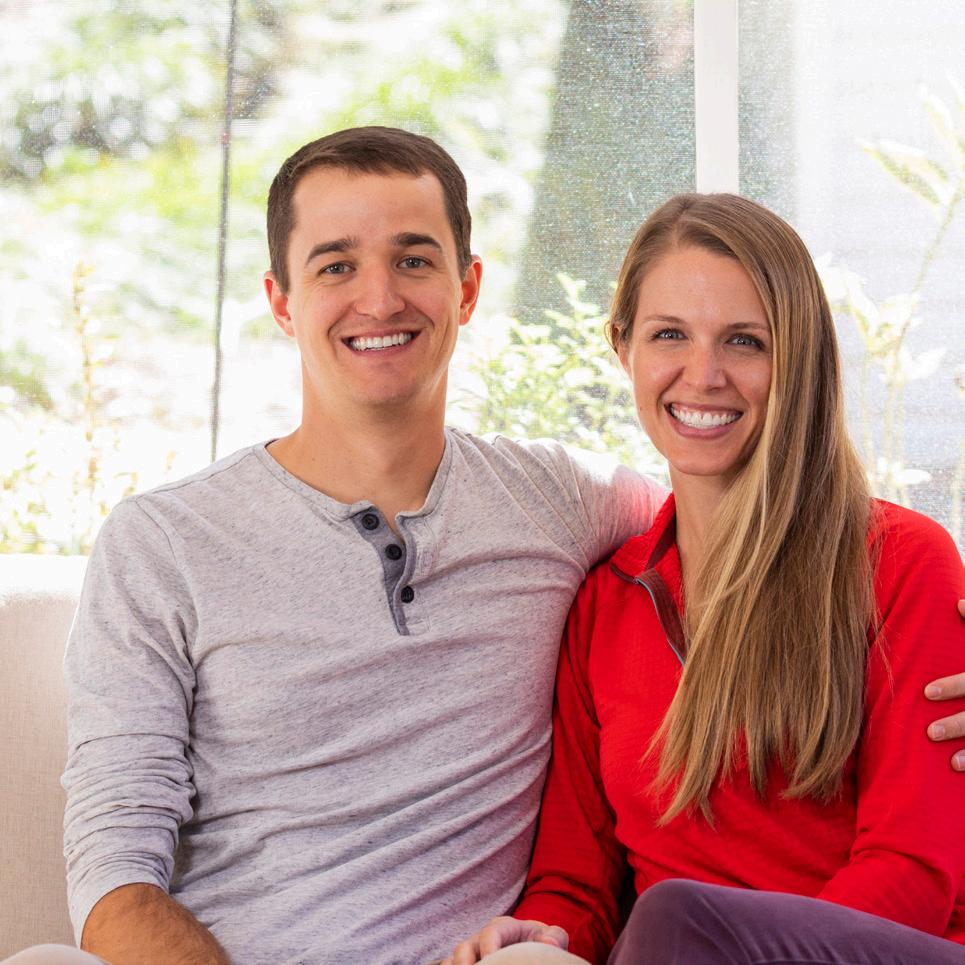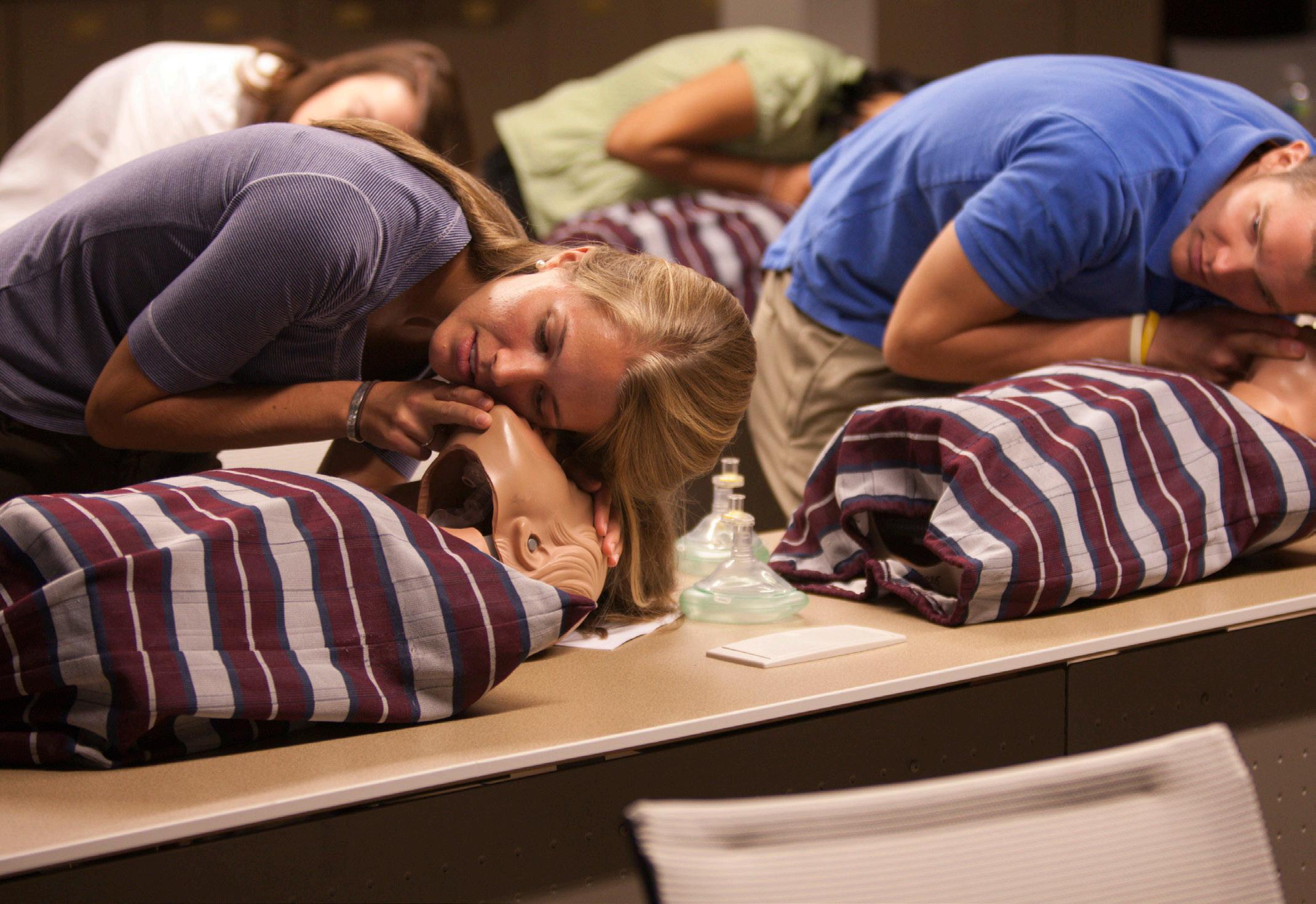
5 minute read
Just What the Doctor Ordered
AU/UGA Medical Partnership is taking on the state’s physician shortage.
Students in the AU/UGA Medical Partnership head to class in this file photo from 2015. The partnership was established on UGA’s Health Sciences Campus, on the grounds of what had been the Navy Supply Corps School.
written by leigh beeson ma ’17
Small class sizes. case-based learning. And a real sense of community.
That’s what drew Cristina Elstad MD ’14 to the Augusta University/University of Georgia Medical Partnership. It was 2010 and the partnership’s first year educating medical students. Elstad had applied to med schools all over the country after graduating from Notre Dame, but her family was Georgia-based and she felt called back.
“One of my future professors, Dr. Clive Slaughter, was in the building and gave me a tour,” Elstad says. “You could just tell immediately that it was a very personal feel. By the end of my time there not only did the dean recognize me personally, but she knew what my family did and where they were from.”
Her experience as part of the inaugural class at the partnership did not disappoint.
“I think they did an astounding job at building a program that was forward-thinking in the way that it is taught,” Elstad says. “And from a handson standpoint, I felt more prepared surgically and procedurally than I think students from other places just because it is a smaller environment and it is more one-on-one learning. I felt a step ahead on some things because of the opportunities that I was provided here.”
In 2009, the Medical College of Georgia at Augusta University and the University of Georgia established a four-year medical school campus in Athens to grow the number of physicians produced by the state’s only public medical school and to help address physician shortages across the state and region.
The partnership’s first home was a historic building right beside the North Oconee River. But when the Navy vacated its 56-acre Navy Supply Corps School on Prince Avenue, the university jumped at the chance to develop a new Health Sciences campus. (The revamped building on the Oconee now houses the School of Social Work.)
Commissioned in 1954, the property served for years as a training site for Navy Supply Corps officers in leadership, food service, data processing, and more. The school also provided specialized advanced logistics training to U.S. Naval personnel and military officers from abroad.
After more than a year of renovations, the partnership moved into its current home on Prince Avenue in 2012.
Ryan Lam pulls his paper piñata onstage with his classmates to reveal his match results at Match Day 2016.
the state of georgia has 22,471 physicians 10.5m to serve georgians 200 that’s around physicians 100,000 for every georgia residents

andrew davis tucker
combating the physician shortage

chad osb u r n
“According to the latest data by the Association of American Medical Colleges, the projected shortfall of physicians in the United States will be close to 139,000 by 2033,” says Dr. Michelle Nuss, campus dean at the AU/UGA Medical Partnership. “The shortage has been magnified by the ongoing pandemic but also is attributed to the aging population and physician retirement. The class expansion at the Medical Partnership will help offset this growing physician shortage.”
The situation in Georgia, specifically, is particularly bleak.
The state has 22,471 physicians to serve over 10.5 million Georgians, according to the Georgia Board of Health Care Workforce’s 2018 physician renewal survey. But about 3,000 of them don’t work full time, and more than half of those actively practicing are age 50 or older, with retirement looming.
Georgia has increased its total number of physicians by about 4,000 over the past decade, but the rate of physicians to the Georgians they serve has continued to hover at around 200 physicians for every 100,000 people. Rural areas of the state are particularly hard hit. Nine of Georgia’s 159 counties don’t have a single physician, let alone specialists like gynecologists or pediatricians.
The AU/UGA Medical Partnership is working to change that.
—dr. michelle nuss

Cristina Elstad, a member of the Medical Partnership’s first graduating class, takes part in a CPR class in this file photo from 2010.

Right, Elstad and her husband, Parker Smith, both returned to practice in Athens after graduating from the Medical Partnership.
dot paul
growing its impact
Ten years after its founding, the partnership still boasts those small groups, hands-on learning, and bonded cohorts that appeal to students like Elstad. But this fall, the medical school increased the class size from 40 students to 50, with plans to add 10 more students each year through 2024, bringing total enrollment to 240 students at the Athens campus.
“For the last decade, the partnership between the state’s flagship university and Georgia’s only public medical school has produced not just more physicians for Georgia, but expanded research collaborations that address some of the state’s major maladies like stroke, obesity, and cardiovascular disease,” says Dr. David C. Hess, dean of the Medical College of Georgia. “I am confident the continued growth of both campuses will ensure that for years to come.”
Alongside the increase in student enrollment, the partnership also upgraded Russell Hall on UGA’s Health Sciences campus. The state-funded $3 million renovation included a state-of-the-art simulation suite and clinical skills lab, active learning classrooms, and specific spaces for small-group learning, studying, and collaboration.
Georgia is already seeing the benefit of the collaboration between universities, with 68 Medical Partnership alumni choosing to practice or complete their residencies and fellowship programs around the state. Sixteen grads decided to stick around and are now practicing in the Athens area.
Elstad is one of them, and so is her husband, Parker Smith BS ’10, MD ’15. After completing her residency in obstetrics and gynecology at Emory University, Elstad joined Athens ObGyn. Smith practices emergency medicine at Piedmont Athens Regional Hospital. And both have given back to the university where they first met.
“Part of the excitement of coming back to Athens was that I loved to teach, and I really have been excited to be involved in teaching at the program where I trained,” Elstad says. “We’ve done some hands-on sessions with the students, both of us. And I’ve given a handful of lectures, and we do some interest groups and mentoring. I think it’s a fantastic program, and it’s super fun to be back and seeing it from the other side.”
GM



